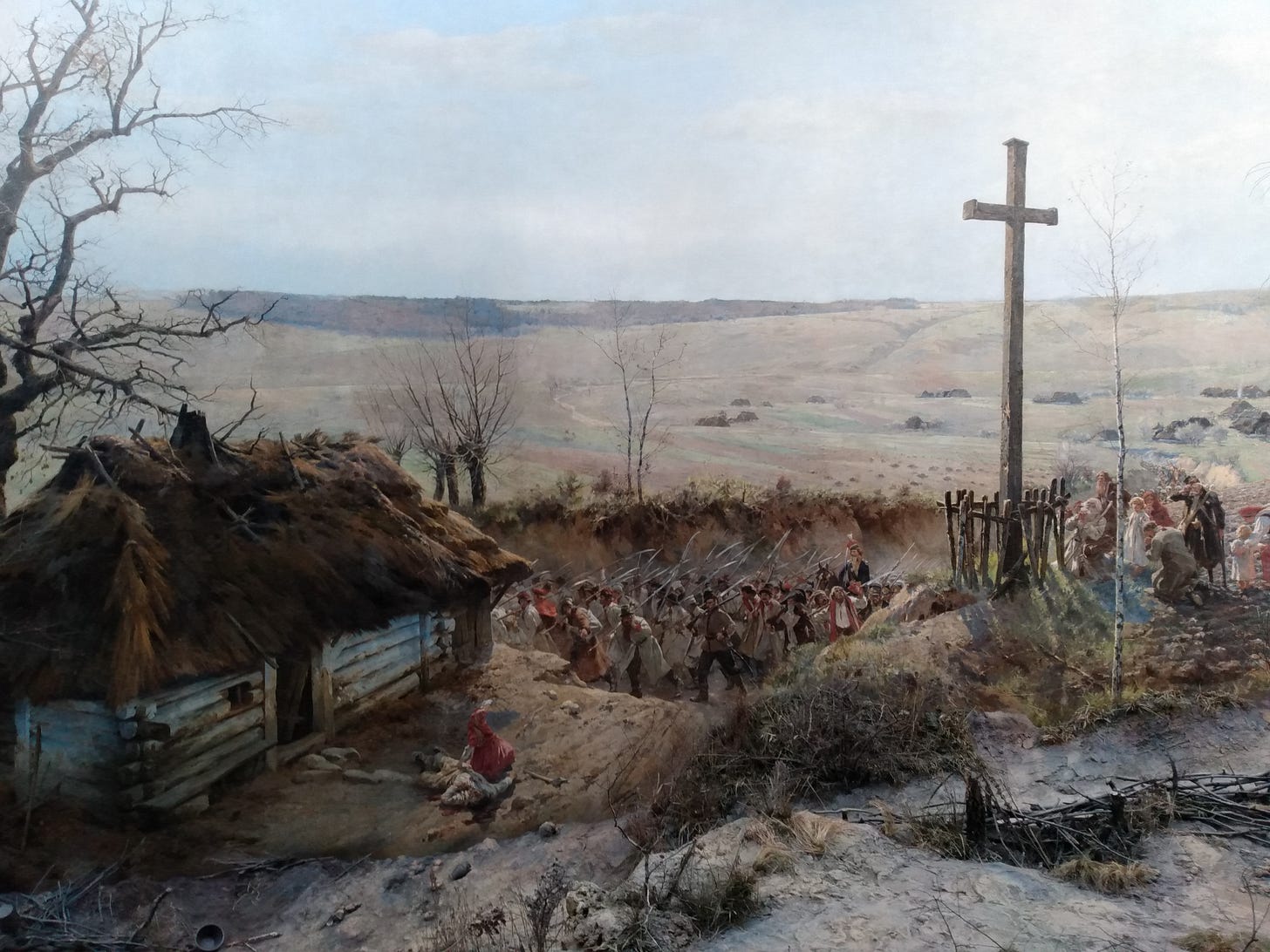It's "All Over the Place!"
Issue 1: The Panorama of Racławice
Welcome to All Over the Place with Adam Larson!
Some people are what I call pointy. They have a specific interest or career path that they know a lot about and focus most of their professional efforts on. I am not pointy.
In college, I was a natural science major, a social science minor, tutored humanities classes, and was active in a performing arts group for all four years. Since graduating high school, I’ve studied or worked in four states and two foreign countries, and I am still exploring the world while I can. Since becoming a writer, I’ve written about dinosaurs, bears in backyards, Harriet Tubman, UFO sightings, turkeys, and Aaron Rodgers.
See? All over the place in places and interests, and as such, each issue of the newsletter will focus on a different place or interest. Expect issues about places I visit, people I meet, food I eat, and more, with links to my recently published work at the end.
The Panorama of the Battle of Racławice, Wrocław, Poland
Museums often talk about the number of objects in their collections with a sense of pride. But one branch of The National Museum in Wrocław doesn’t talk about having lots of paintings; it’s an art museum that has fewer paintings on display than most people have hanging in their kitchens. But what it lacks in numbers it makes up for in the physical size of the painting and the ambition behind it. The museum’s single painting, the Racławice Panorama, is nearly fifty feet tall and close to four hundred feet long. Artists led by Jan Styka and Wojciech Kossak used over a thousand pounds of paint over a period of several months to finish the enormous artwork in 1894.
The late 18th century was a challenging time for Poland, as it found itself sliced into pieces by neighboring Russia, Prussia, and Austria. In 1794, Tadeusz Kościuszko (who designed fortifications for the United States in the Revolutionary War) led an uprising against the Prussians and Russians in an attempt to save his homeland, and the painting is a vivid depiction of a Polish victory over the Russians at the Battle of Racławice.
The painting is displayed on the wall of a specially built circular room, with a viewing platform in the middle. Between the viewing platform and the painting is a diorama made to blend into the painting behind it, like many displays in natural history museums.
A half-hour audioguide available in multiple languages explains the scene and does a good job of identifying who’s on what side considering the number of different uniforms worn. Polish peasants armed with farm tools boldly charge into enemy lines, overwhelming the Russian defenders and capturing artillery. Fleeing Russian cavalry find themselves exposed to Polish musketeers, and Polish cavalry capture the battle flag of a Cossack regiment.
It’s not all just martial heroics, though. Dejected Russian captives watch the rout under the watchful eye of their Polish guards. Women, children, and old men pray for victory and safety before a cross. A widow grieves besides the body of her husband and what remains of their home.
Weirdly, it doesn’t feel as large as you might expect it to feel. Because it’s the only painting on display, viewers don’t have the sense of scale they get when they have already been up-close with paintings of a more regular size before seeing the behemoth. The viewing platform keeps you from getting close to the painting and elevates you well above the bottom of the painting, so you’re looking out at it instead of up at it. Because it’s displayed as a panorama that is connected on the ends, it’s trickier to wrap your head around its size than if it were to be laid out flat. And the sheer scale of the painting makes you think you’re looking at a movie screen instead of a painting.
That being said, it still feels enormous, and is a great experience to see.
New Articles:
A pig kidney transplant, and then a pig heart transplant: How GMOs are saving lives.
Feral pigs in California destroy property and endanger humans. Time to stamp them out.
See more of my articles at:




Pozdrawiam z Pleasant Prairie,WI.Jestem emigrantem z Polski.